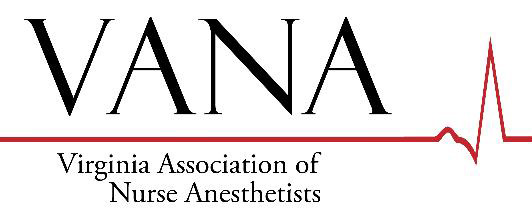Instructor Profile: Amy Wielar
This month, VANA is excited to profile Amy Wielar, a pediatric cardiac CRNA who practices and teaches in the Richmond area. With over 20 years of experience, her insights into such a critical practice area can help so many of us learn and grow.
I’ve been a CRNA for nearly 24 years. I attended nursing school at the University of Virginia and began working at Johns Hopkins before getting married and moving to Richmond, where I relocated to the coronary medical ICU at VCU. After my time there, I decided it was time to go to anesthesia school, and my husband and I moved to California so I could attend the University of Southern California. Once I finished school I joined the University of North Carolina, that was building their Children’s Hospital at the time.
I don’t know that transitioning to the Children’s Hospital was a conscious choice, but this specialty picked me and I’m so grateful that it did. I started working with the kids and then daily, found myself going back again and again, for ten years.
Now, I work part time at University of Virginia, where I’ve been since 2010. I’ve been working in pediatric cardiac anesthesia for nine of those years, and I continue to love it. Additionally, I work part time at the Children’s Hospital of Richmond. I also teach when I’m able – I’ve taught for Mary Baldwin, Duke, and VCU in the past, and find that helping to introduce students to the world of pediatric cardiac anesthesia gives back in so many ways.
I love being able to focus all my energy on one patient at a time, and nurse anesthesia allows for that. When I first started out, I was worried about my ability to bond with the patients because they spend most of the time under anesthesia, but that’s part of the reason why pediatric cases are especially fun and challenging. I have just a few moments to create a safe and comfortable space for children and parents to feel willing to walk away from one another; to understand what’s taking place and to answer any questions. This process is all about trust.
As an instructor, my classes discuss tips for putting pediatric patients at ease: things like explaining procedures directly to kids, “practicing” with dolls, and even having discussions without gloves to keep kids calm and at ease. We try to keep everything as positive and encouraging as possible for these future practitioners who are going to need to bring the same energy to their own work.
The ability to properly treat and work alongside children is something that we train students for – it really is an additional challenge and is so critical for success. Some of our cases are incredibly emotionally difficult and require practitioners to understand what they’re stepping into. So many circumstances are amplified and carry a bigger impact when they affect a toddler. I do my best to encourage students to explore those personal limits early and often so they can find the right role, and so each of our patients can be served to the best of their abilities. If there are healthcare procedures that students aren’t personally comfortable participating in, it’s important their health system know so the needs of patients can be served by someone else.
I would also encourage students to be involved in leadership as often as possible. Oftentimes, I just want to do my job – what I’m trained and qualified to do. Unfortunately, sometimes even that can have occasional barriers to entry. So, I just continue to knock on that door, doing my very best every single day, and demonstrate excellence in practice.
For students, there are also leadership opportunities in quality and safety projects. Opportunities to work alongside other health system leaders will provide avenues for those leaders to understand how deeply our students care, how hardworking they are, and just how much knowledge they really have. And of course: volunteer with VANA!

